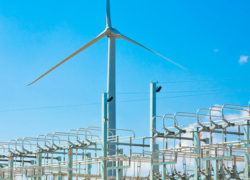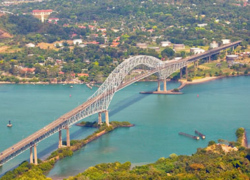What’s on the Horizon for Asia-Latin America Trade?
Originally published in the Dialogue’s daily Latin America Advisor.
Q: While China-Latin America trade and investment ties have dominated headlines over the past decade, a flurry of recent deals between Latin American leaders and other Asian countries has brought more attention to non-China trade flows with the region. What is the current trade dynamic between Latin America and countries like South Korea, Japan, Vietnam and others in the Asia-Pacific region? What is the outlook for trade between the regions? What specific countries and sectors will most likely flourish in the period ahead, and why?
A: Ann Lee, senior fellow at Demos and adjunct professor at New York University: “The current trade dynamic between the northern Asian countries, such as Japan and South Korea, and Latin America is similar to that of China. These countries also have a strong manufacturing base-one that is both competitive with and dependent on China’s-so they, likewise, export technology. This technology will become increasingly competitive to that offered by the Germans and Americans at probably much lower prices. This trend will drive even more trade between the Asia-Pacific region and Latin America as Asian countries start increasing market share in technologies that Latin American countries need to upgrade their telecommunications and energy infrastructure. In contrast, the ASEAN countries, such as Vietnam and Indonesia, will become greater competitors of Latin America in light manufacturing for textiles and other goods as their infrastructure improves, labor remains cheap and their governments copy China’s model. The outlook for trade between these two regions should get rosier. As the economies of Latin American countries continue to grow, they will be able to import even more technology from Asian countries. This will make the Latin American workforce more productive and efficient in the long run. The countries that will benefit most will be the ones in the best position to capitalize on these trends. Countries that can take the surpluses from exporting natural resources and reinvest them in improving their hard and soft infrastructure will be able to compete against the ASEAN countries for light manufacturing. However, the need for natural resources such as oil will only increase as the world grows wealthier. This should be good news for Brazil and Venezuela for the foreseeable future. Countries like Argentina that can supply food to Asian populations will also continue to benefit from Asian trade since usable farmland in Asia is growing scarcer.”
A: Mauricio Mesquita Moreira, principal economist in the Integration and Trade Sector at the Inter-American Development Bank:“There is clearly more to Asia than just China. Yes, China has been the dominant leader of this decade-old boom of the Asia-Latin America trade. It has gone from a negligible share of the Asian side of this trade in the 1990s to account for nearly 50 percent in 2011. Yet, there is the other half that is estimated to have reached $222 billion in 2011-not exactly an afterthought. Countries such as Japan, South Korea and India-all large economies and all also hungry for natural resources-have also seen their trade with Latin America and the Caribbean growing at double digit rates and, in some cases, absorb a greater variety of the region’s exports. Thirty percent of the exports from LAC to Korea, for instance, are manufactured goods as opposed to 15 percent to China. One should also mention the smaller fast growing ASEAN countries, where the complementarity with LAC’s resources is less obvious-some of them such as Indonesia and Malaysia, are also resource-rich. But their little exposure to products from Latin America and the Caribbean, which accounts on average for less than 2 percent of their total trade, suggests that there are trade gains to be made in both agriculture and manufacturing. China’s neighbors have also managed to keep a better balance between trade and investment in the region. Japan is still by far the largest Asian investor in LAC, accounting for 40 percent of all greenfield Asian investments since 2003; toppling China’s share by almost a factor of three. No wonder why they have managed to have a more harmonious bilateral trade relationship, with no signs of the trade tensions we often witness in the China-LAC relations.”
A: Margaret Myers, director of the China and Latin America program at the Inter-American Dialogue: “Asia is an economic game changer for the region. As the main source of growth for Latin American exports, Asian trade has meant high economic growth rates for certain countries in the region-and without the need for painful productivity-enhancing measures. Reflective of a global increase in south-south trade and investment, Asia-Latin America economic cooperation continues to strengthen. Latin America’s trade with China, Japan, South Korea and India is booming. These countries’ share of Latin American trade nearly quadrupled since 2000. As a result, Latin American leaders increasingly are looking east for investors, trade agreements and other forms of economic cooperation. Recent trips to Asia by Presidents Santos and Humala were meant to attract Asian capital and solidify trade agreements. Complementarities will promote economic engagement between the two regions for the foreseeable future. Latin America is endowed with commodities, whereas Asia is a natural producer of manufactured goods. Despite concerns about slowing Chinese growth, trade complementarities appear likely to generate a steady stream of revenue for Latin America’s major commodities exporters. Analysts predict a positive cycle for international commodities prices through the next decade. Long-term growth, on the other hand, will require improvements to the quality of Asian trade and investment, as well as policies that address Latin America’s competitiveness challenges. The region must diversify its productive base and encourage Asian investment in value-added sectors. As the Asia-Latin America relationship intensifies, new linkages are altering the Latin American landscape-literally, through extractive sector activity and infrastructure development, but also in terms of regional relationships. The United States is arguably positioning itself as an intermediary between the two regions. New intra-regional partnerships are being formed as Atlantic coast nations attempt to access the Pacific. Cross-Pacific engagement is changing the ‘game’ in multiple ways.”



















